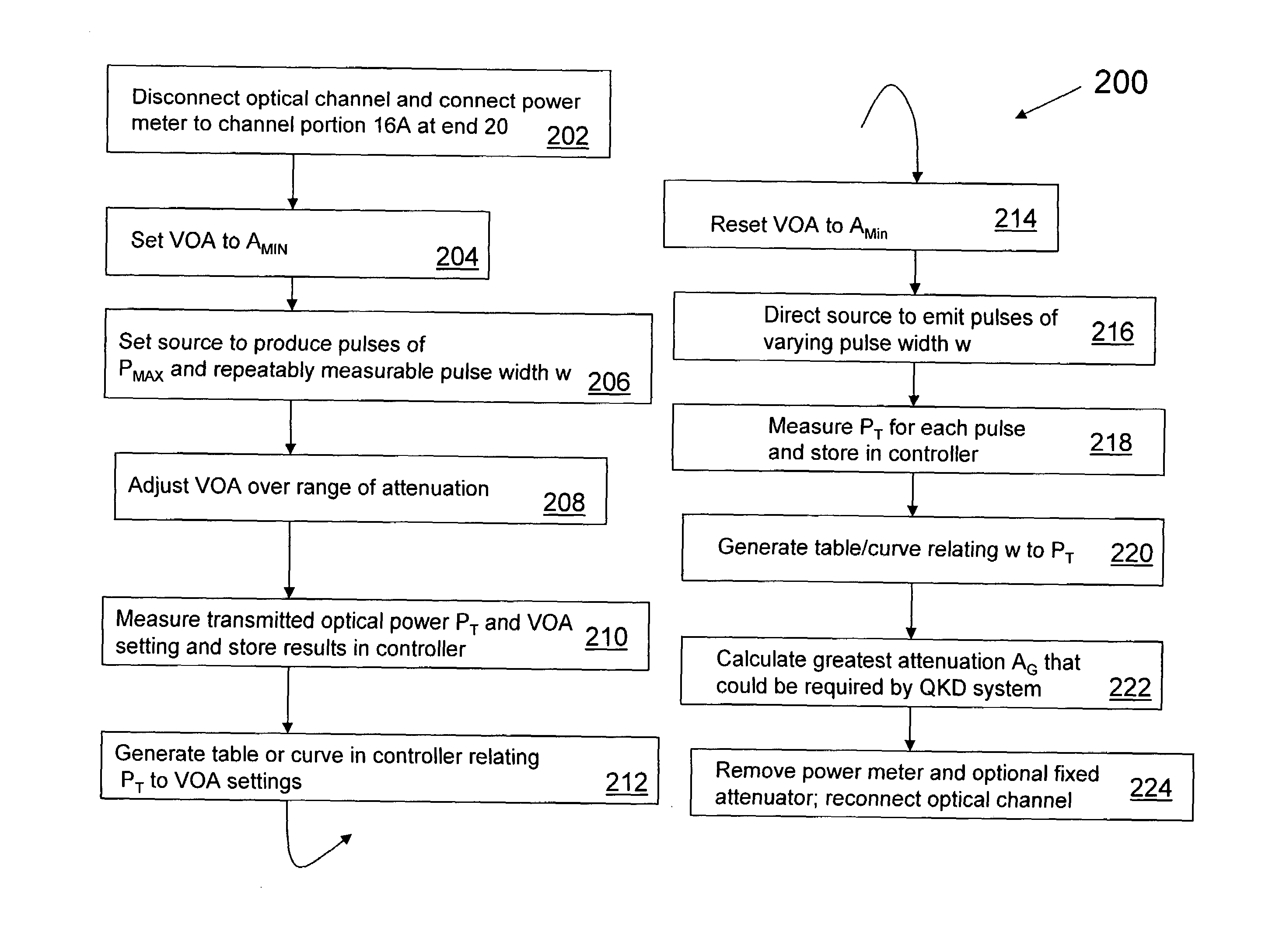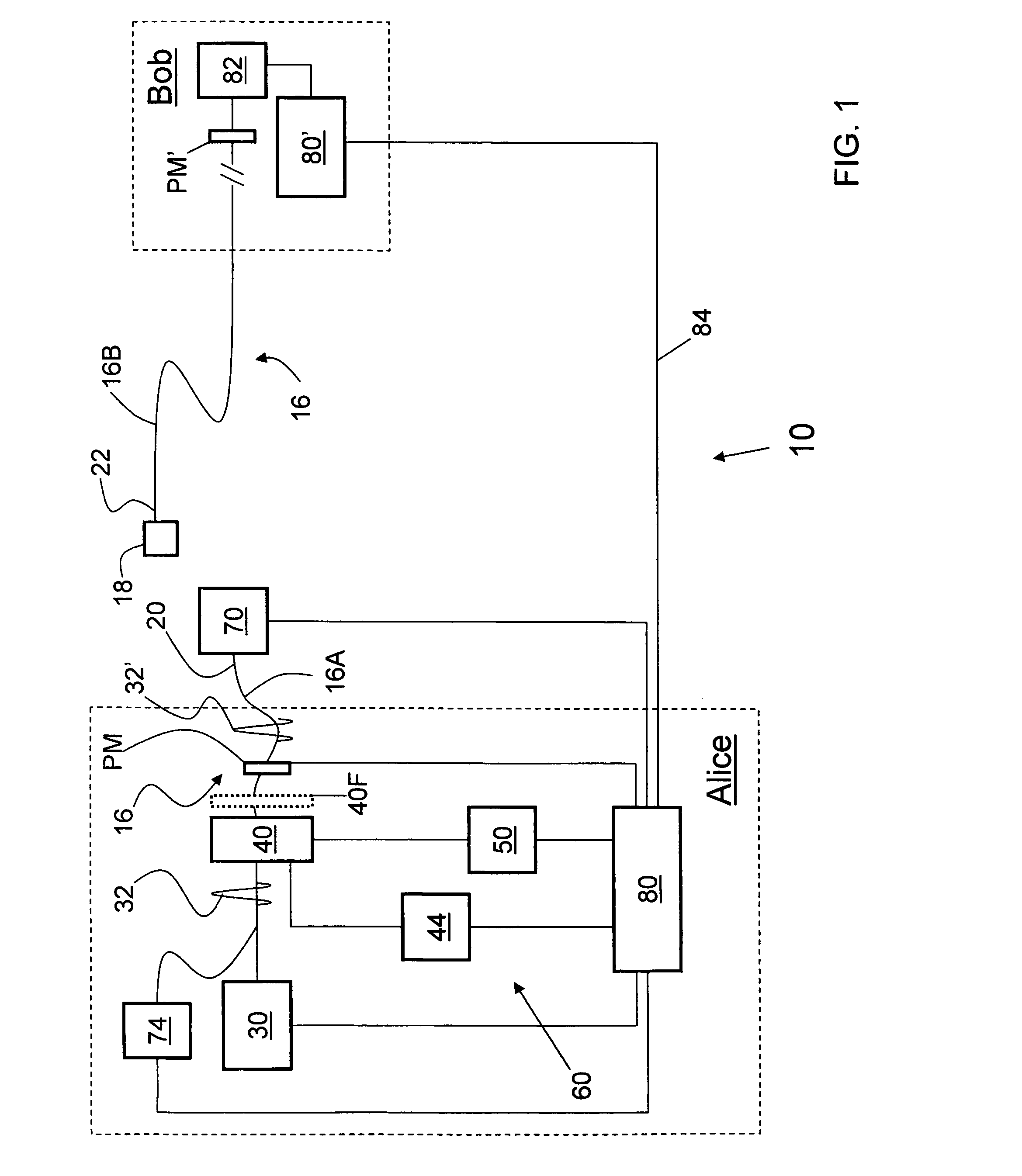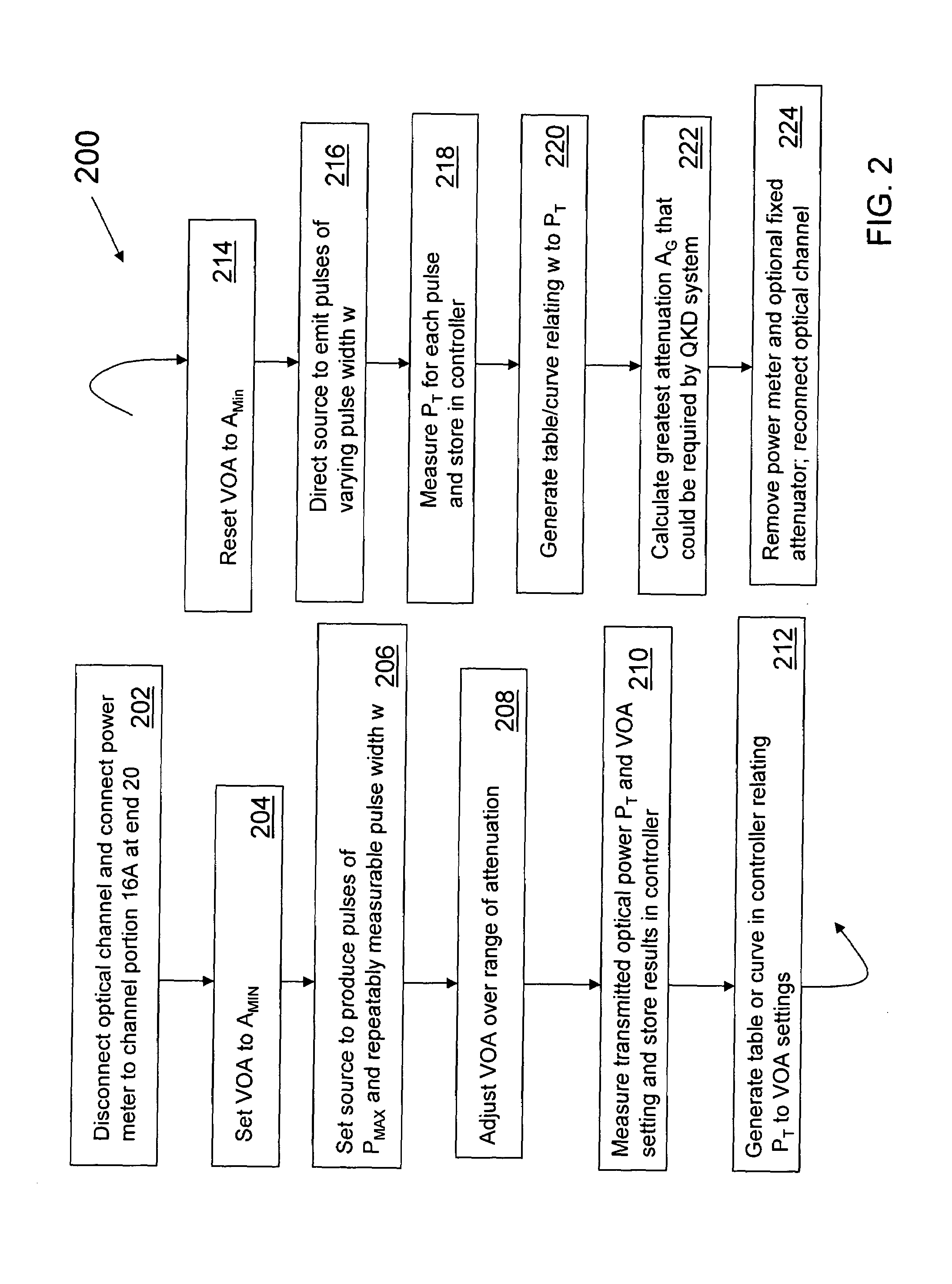Optical pulse calibration for quantum key distribution
a quantum key and optical pulse technology, applied in the field of quantum cryptography, can solve the problems of inability to realize the information about the key obtained by an eavesdropper, inability to perform the needed attenuation, and inability to realize the effect of attenuation,
- Summary
- Abstract
- Description
- Claims
- Application Information
AI Technical Summary
Benefits of technology
Problems solved by technology
Method used
Image
Examples
Embodiment Construction
[0017]The present invention is a system and method for optical pulse calibration in a QKD system. The systems and methods apply to both one-way and two-way systems. For the sake of convenience, the invention is first described in connection with a one-way system.
[0018]FIG. 1 is a schematic diagram of a QKD system 10 having a first station Alice and a second station Bob. Alice and Bob are optically couple via an optical channel 16, which may be an optical fiber or free space. Optical channel 16 includes first and second optical channel portions 16A and 16B connected by a connector 18. Channel 16A has an end 20 and channel 16B has an end 22. Connector 18 allows for the optical-channel to be separated downstream of a VOA (discussed below) and accessed in order to perform the calibration procedures of the present invention, as described below. In FIG. 1, optical channel 16 is shown disconnected at coupler 18.
[0019]Alice includes an optical radiation source 30 capable of generating optic...
PUM
 Login to View More
Login to View More Abstract
Description
Claims
Application Information
 Login to View More
Login to View More - R&D
- Intellectual Property
- Life Sciences
- Materials
- Tech Scout
- Unparalleled Data Quality
- Higher Quality Content
- 60% Fewer Hallucinations
Browse by: Latest US Patents, China's latest patents, Technical Efficacy Thesaurus, Application Domain, Technology Topic, Popular Technical Reports.
© 2025 PatSnap. All rights reserved.Legal|Privacy policy|Modern Slavery Act Transparency Statement|Sitemap|About US| Contact US: help@patsnap.com



